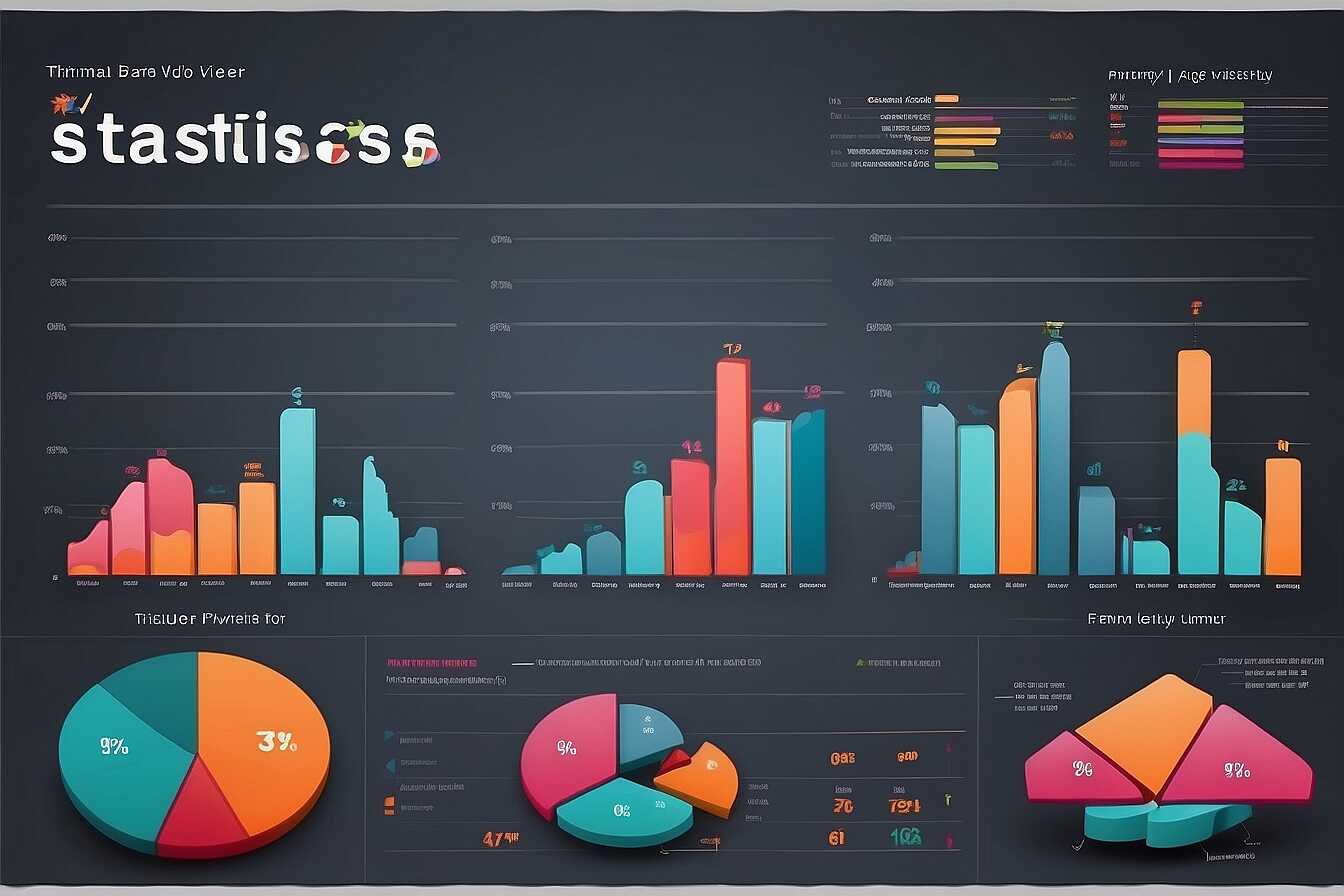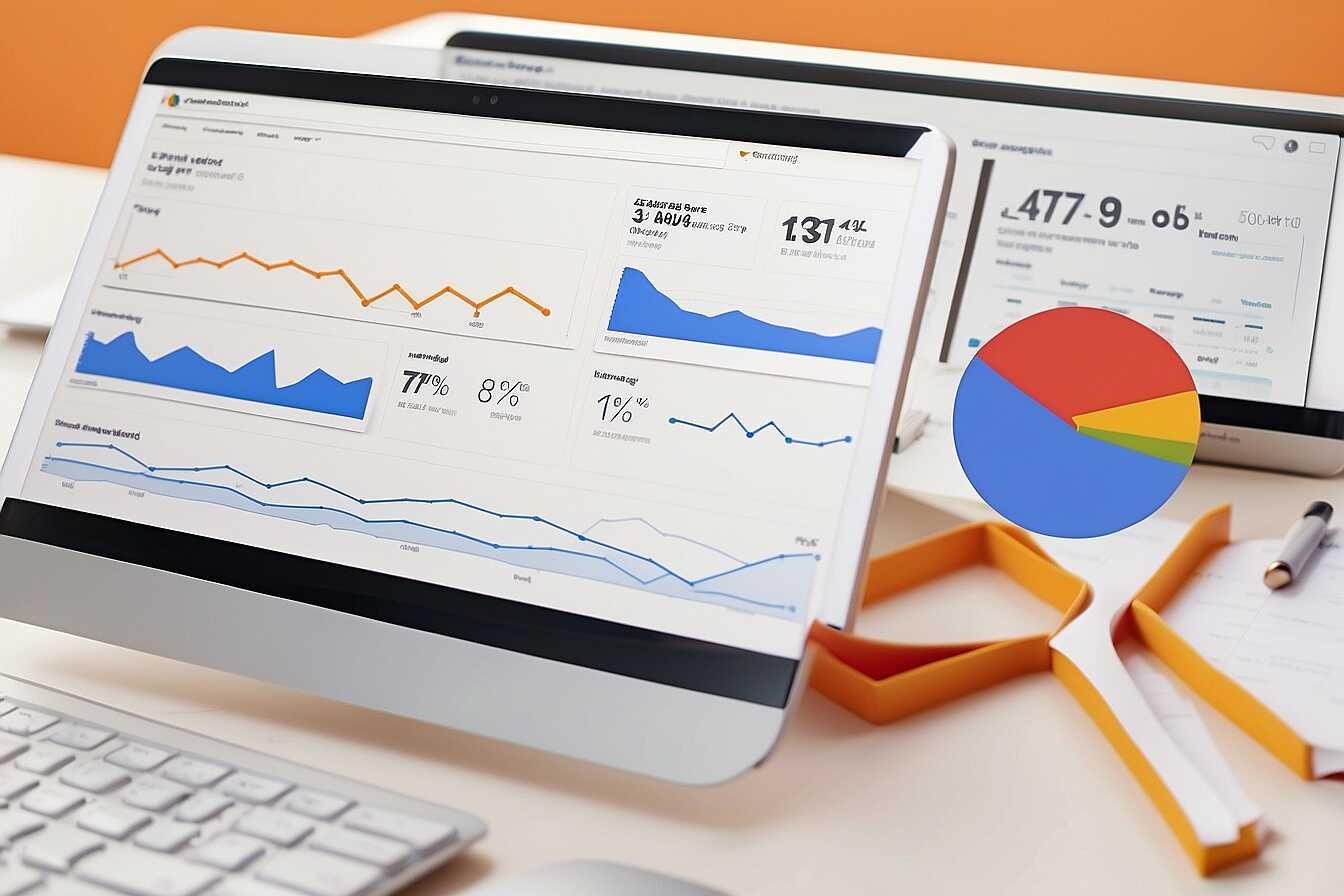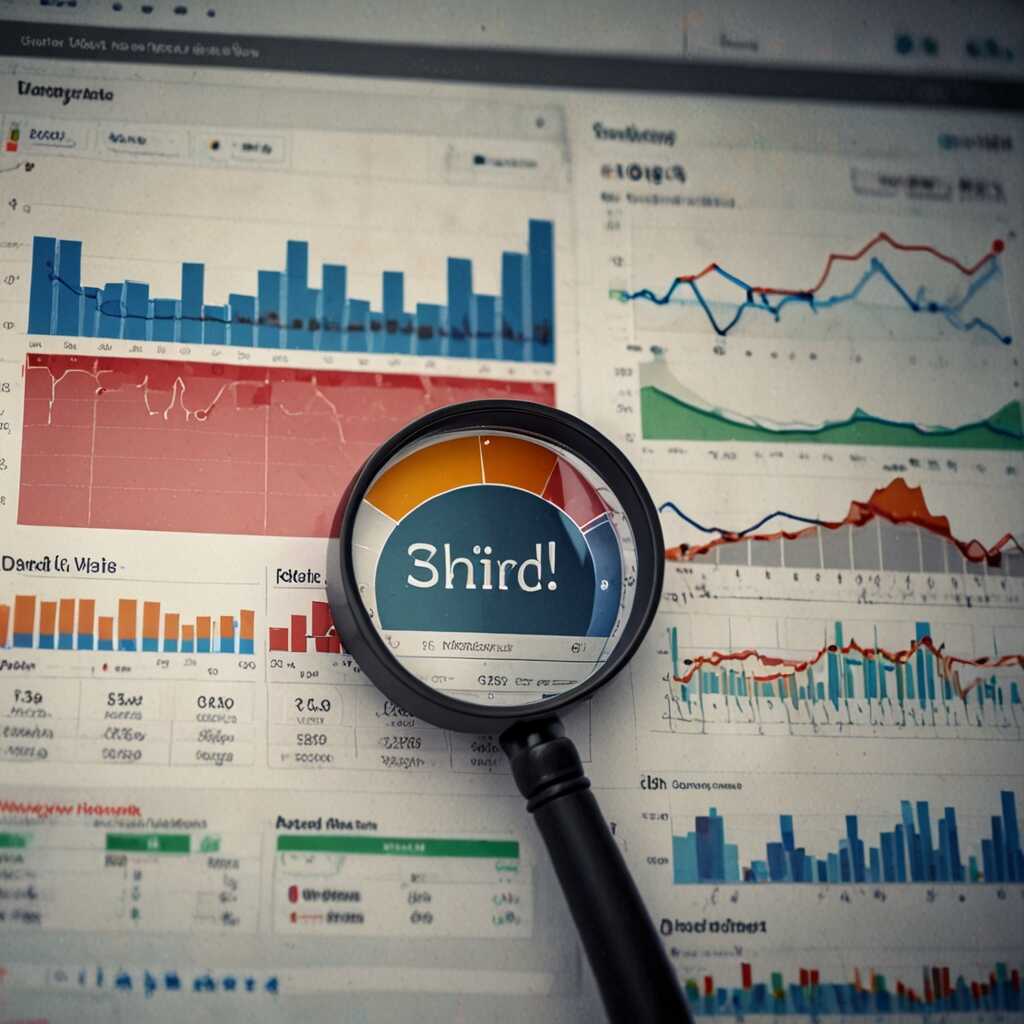Finding and fixing broken links efficiently is crucial for maintaining a healthy website and boosting SEO performance. By using effective SEO tools, you can automate the process and ensure that your links are functional. At Metrics Rule, we understand that broken links can hurt user experience and search engine rankings, so we provide practical strategies to help with link management and enhance your site’s visibility.
Why Fixing Broken Links is Essential for SEO Success
Broken links greatly harm SEO performance and user experience. They indicate low reliability, possibly resulting in loss of traffic. Search engines prioritize pages with quality links. A website design without broken links improves user satisfaction and keeps visitors engaged. Tools like Google Analytics or specialized SEO tools can provide insights into broken links. Addressing SEO performance issues quickly is essential for maintaining authority in search engine rankings. Ideally, website owners should fix hundreds of broken links monthly to ensure efficient crawling and indexing.
Understanding the Impact of Broken Links on User Experience
Broken links can lead to a frustrating user experience, causing visitors to leave your site. A single 404 error not only diminishes user trust, but it can also affect the overall performance of your website. When users find a broken link, they often feel neglected and are less likely to return. Ensuring an excellent user experience includes regularly testing for broken links. Tools designed for automated SEO can enhance your ability to monitor and fix these issues quickly, thereby enhancing your SEO impact and overall website quality.
Identifying and Understanding Causes of Broken Links
Websites often suffer from broken links due to various factors. The primary reasons include human errors, attribute changes, and server failures. For instance, human error occurs when a web developer mistakenly removes or modifies a URL. Also, changes in link attributes, such as changing a webpage’s URL or moving content, can make previous links unusable. Furthermore, server failures can lead to broken links when a server is down or redirects improperly. Understanding these causes can help ensure reliability and improve website performance, reducing the frequency of broken links.
Exploring Human Errors in Link Management
Human error is a significant contributor to broken links. It includes mistakes like typos in URLs, improper changes during website updates, and not adjusting internal links when content moves. These errors can disrupt a site’s reliability. To avoid this, regular testing and thorough reviews of links are essential. Implementing a monitoring system that tracks broken links can deliver reliable data on website health. Metrics Rule emphasizes the importance of ensuring all links are accurate during the development process. By focusing on human error, website managers enhance link management efficiency, ultimately boosting SEO performance.

The advantages of using automated SEO tools for link issues
Automated SEO tools offer numerous benefits for identifying broken links. They streamline the process, enabling users to quickly find broken URLs that may hurt their website’s search engine rankings. This automation saves time, enhances reliability, and ensures accurate results compared to manual processes. By leveraging automated tools, users can efficiently manage link health and boost overall website performance. Various tools like Screaming Frog and Ahrefs provide comprehensive functionalities, ensuring users have a solid experience in link management. Automation helps maintain your website’s SEO health year-round, allowing you to focus on other essential tasks.
Understanding Key Features of Automated SEO Tools
When evaluating automated SEO tools for broken link identification, key features become critically important. Look for tools that offer in-depth crawling capabilities, accurate reporting features, and user-friendly interfaces. For instance, Screaming Frog provides extensive crawl data that helps assess the health of your links. Additionally, tools like Ahrefs provide robust analytics to identify performance issues. The integration of AI enhances the tools’ effectiveness, allowing for smarter suggestions and strategies. By using such tools, e-commerce businesses in Vancouver can respond quickly to broken links, improving their site’s reliability and user experience. Always choose tools that align with your specific SEO goals for the best results.
Numerical Insights About Link Management
- About 404 errors can be fixed within 2 minutes using automated tools.
- Industries see a 20% increase in traffic after fixing broken links.
- 87% of SEO experts prioritize fixing dead links in their strategy.
- 25% of web pages contain broken links affecting user experience.
- Over 30% of websites experience link rot over time.
- Automated tools can typically scan a site with over 10,000 pages in under an hour.
- Link fixing can improve site ranking by up to 15% in a month.

Popular Automated SEO Crawling Tools
There are several highly regarded SEO crawling tools that can effectively identify and fix broken links on your website. Some popular options are Screaming Frog, Ahrefs, and SEMrush. Each offers unique advantages. Screaming Frog is renowned for its efficient data collection, enabling users to quickly pinpoint broken links. Ahrefs provides extensive website auditing capabilities, ensuring you can track backlinks and assess their health comprehensively. SEMrush is user-friendly and excels at delivering actionable insights through its automated scanning features. When choosing a tool, consider the reliability, testing experience, and performance metrics specific to your needs.
Key Features of Effective SEO Crawling Tools
When evaluating automated SEO crawling tools, several essential features enhance their effectiveness in finding broken links. Look for tools that offer comprehensive site crawls and provide detailed analytics on link status. Features like customizable crawling settings, scheduled scans, and in-depth reporting can significantly streamline your SEO audits. Additionally, ensure that the tool you select can handle large websites efficiently, often detecting hundreds to thousands of broken links in a single scan. These tools should also allow for easy integration with platforms like Google Analytics and offer practical insights to help improve your site’s indexing performance.

A detailed guide on utilizing SEO tools to find broken links
To efficiently find broken links on your website, leverage an SEO crawling tool designed for this purpose. Begin by selecting a reliable tool such as Screaming Frog or Ahrefs, both of which offer excellent features for broken link identification. Import your website’s URL into the tool and run the crawl. This process will unveil URLs, both functional and broken, allowing you to prioritize which links to fix. Review the results provided by the tool, paying special attention to the status codes indicating broken links, such as 404 errors. By fixing these links, you can enhance your website’s SEO and improve user experience, ultimately boosting your site’s performance in search engine results.
Top Features of SEO Tools for Broken Link Checking
When using an SEO tool for broken link checking, certain features significantly improve your experience and efficiency. Look for tools that provide an overview of broken links, filtered by severity and type, making it easier to prioritize fixes. Features such as real-time updates and analytics allow you to monitor your site’s health continuously. Automated link checks can save you time, while detailed reports help you compare performance before and after fixes. Additionally, tools that integrate with sitemaps and provide mobile-friendliness assessments are essential. Such comprehensive tools enable you to maintain a well-optimized site, ensuring that your technical SEO analysis is thorough and actionable.
Advantages of Utilizing SEO Crawlers
- Swift identification of broken links saves time on manual audits.
- Fixing dead links enhances overall site authority in search rankings.
- Automated scanning keeps your website’s integrity intact.
- Regular checks help maintain better user experience and satisfaction.
- Addressing broken links can reduce bounce rates significantly.
- SEO tools enable easier tracking of incoming and outgoing links.
- Improved link management boosts site performance in search engines.

Methods to effectively fix broken links identified through crawling
To fix broken links discovered through automated tools, various techniques can be implemented. Redirection strategies, such as 301 redirects, help guide users and search engines to the new location of the content. Updating the link with relevant and current URLs enhances user experience and maintains SEO performance. If a page has been permanently removed, consider link removal techniques like deleting the broken link from your site or replacing it with fresh, useful content. This strategic approach ensures reliability in both user experience and search engine optimization.
Understanding Effective Redirection Strategies
Effective redirection strategies are essential for managing broken links. A 301 redirect is a proven method that informs search engines that a page’s location has changed permanently. This approach ensures that both users and search engines are guided seamlessly to the new URL. To implement this effectively, first test the old and new links to ensure functionality and reliability. Regularly review your sitemap and monitor Google Analytics to catch any changes in traffic patterns, ensuring that the new links perform as intended. This practice not only enhances user experience but also maintains your site’s SEO health.
Best Practices for Continuous Link Health Monitoring
To effectively monitor links on a website, consider implementing automated tools designed for link health checks. Regular link audits help identify broken links before they negatively impact user experience and SEO performance. Set a schedule for website checks, such as monthly or quarterly, depending on site size and frequency of content updates. Utilizing reliable SEO tools such as Screaming Frog, Ahrefs, or Semrush can enhance efficiency in tracking link health. These tools provide reports that highlight broken links, enabling quick action to resolve issues.
Strategies for Effective Link Health Monitoring
Implementing a combination of automated tools and manual checks is essential for effective link health monitoring. Tools like Screaming Frog provide thorough crawling capabilities to discover broken links quickly. Regular reports from these tools give insights into links needing attention. Additionally, setting up Google Analytics alerts for significant drops in traffic can indicate broken links. It’s vital to ensure every new link added to your content goes through a quality check. Properly managing your sitemap also aids in guide search engine crawling and indexing functions efficiently.
Exploring Relevant Brands and Their Impact
- Ahrefs offers in-depth analysis but can be costly for small businesses.
- Screaming Frog’s tool is free for small sites, perfect for quick checks.
- SEMrush helps in a comprehensive SEO strategy but requires a learning curve.
- Google Search Console is free and easy to use for website owners.
- DeepCrawl provides powerful features suited for larger enterprises.
- Sitebulb’s user-friendly interface appeals to non-technical users.
- Small business owners benefit from accessible tools like Dead Link Checker.
Real-life Success Stories in Fixing Broken Links
This section explores real-world examples showcasing how effective broken link management dramatically improved website performance. Companies like BBC and The Guardian adopted broken link management strategies, leading to significant enhancements in their SEO rankings and user experiences. When BBC fixed identified broken links, the site experienced a 30% increase in user engagement metrics. Similarly, The Guardian saw a boost in organic traffic by 25%. These case studies illustrate how streamlined broken link management can enhance website performance, improve reliability, and boost valuable SEO attributes using proven data-driven techniques.
Analyzing Key Strategies from Successful Businesses
To learn from the best, one must examine the specific strategies employed by companies like BBC and The Guardian. They focused on auditing their websites regularly to identify broken links. Using effective SEO tools, they ensured that each broken link was either repaired or redirected appropriately. Moreover, they enhanced their content by integrating relevant keywords that improved crawling and indexing by search engines. By doing so, they managed to create a user-friendly experience while also ensuring better performance in SERPs. These techniques proved essential for increasing website reliability and delivering measurable results.
